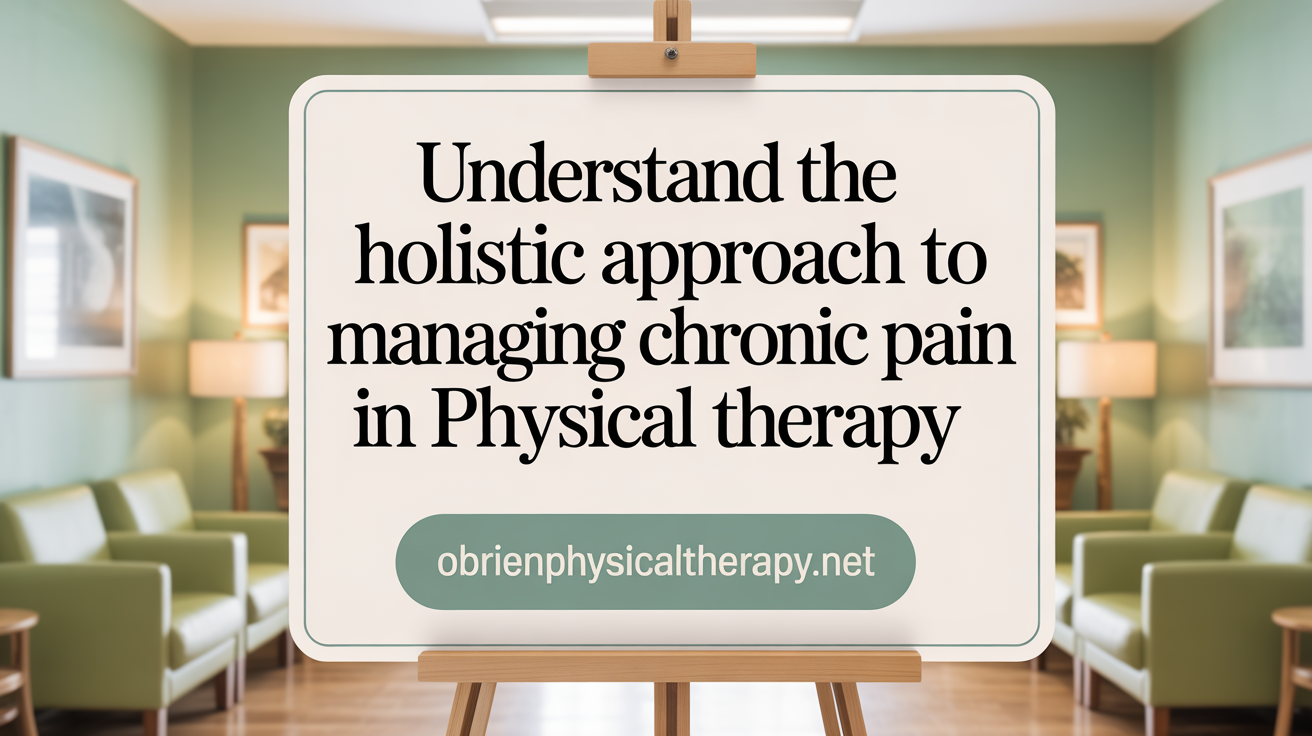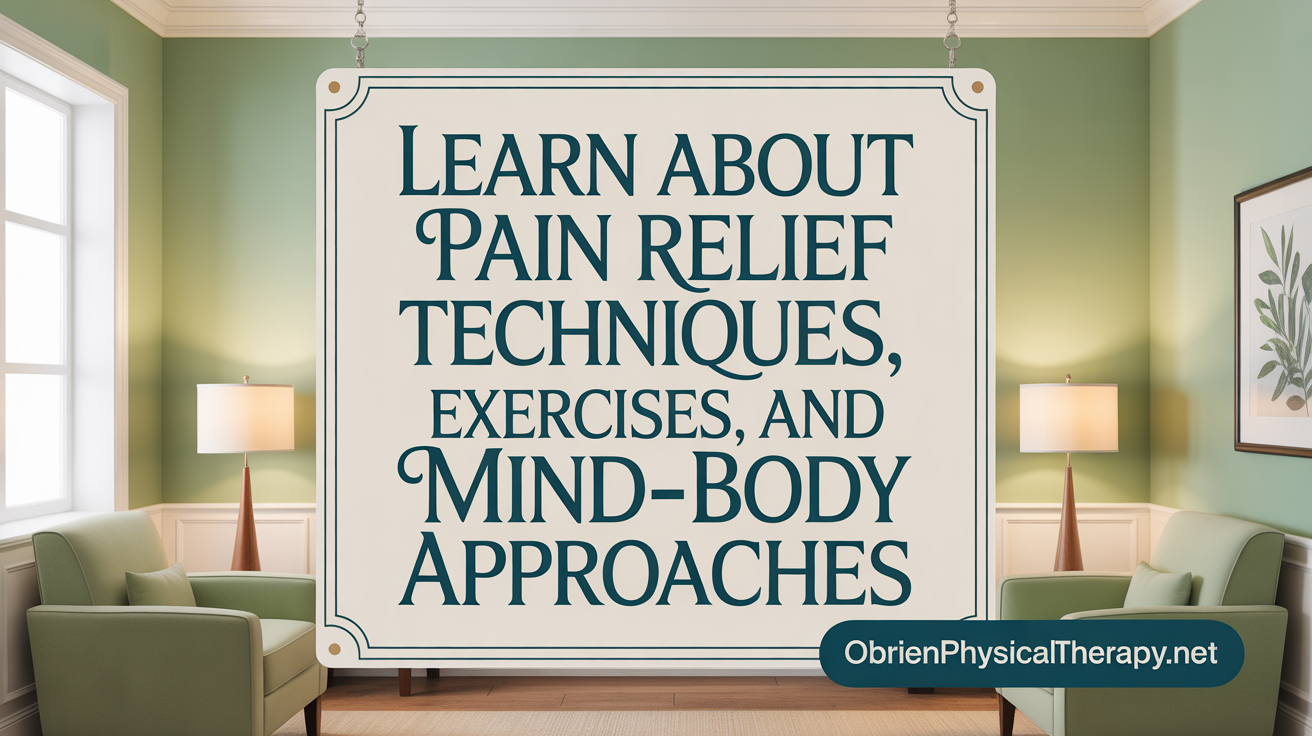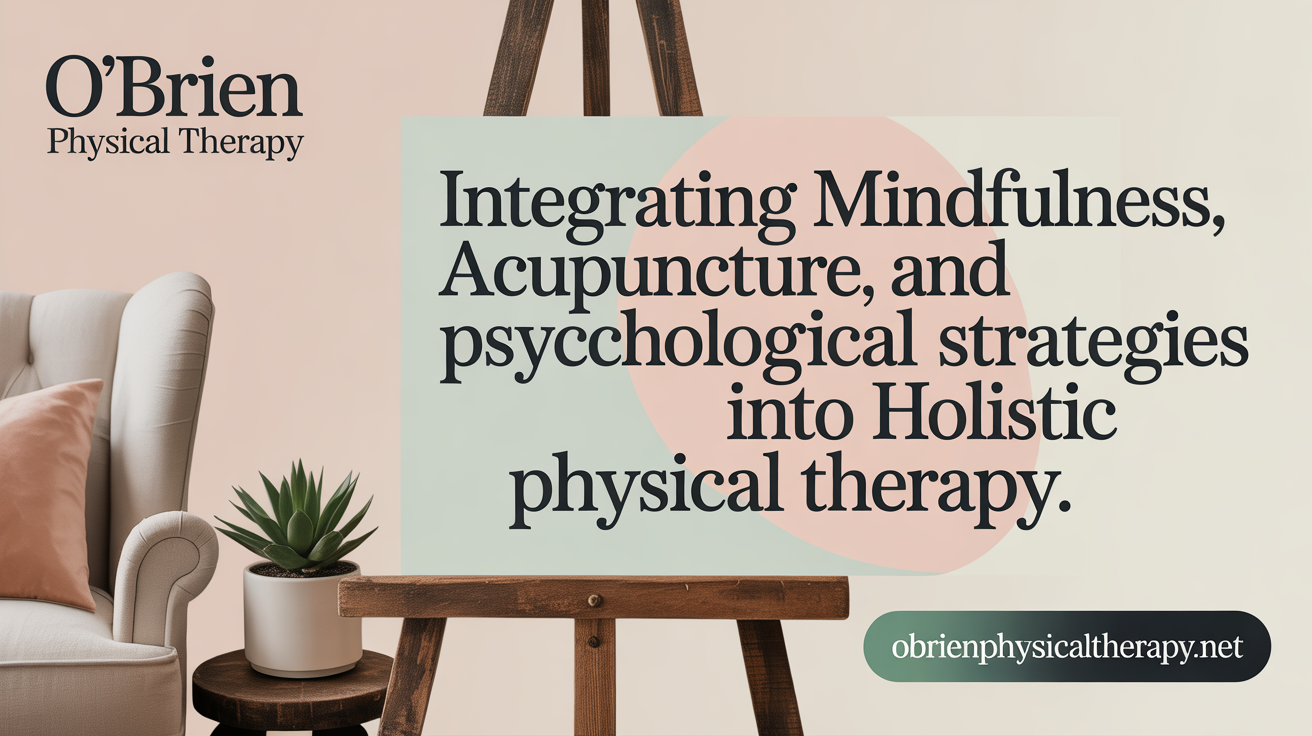Understanding Holistic Approaches to Chronic Pain
Chronic pain presents a complex challenge that affects millions worldwide, extending beyond physical discomfort to impact emotional well-being and quality of life. Physical therapists play a vital role in managing this condition through holistic, patient-centered approaches that go beyond symptom relief, targeting the root causes of pain. This article explores how physical therapy integrates physical, psychological, and alternative methods to provide safe, effective, and personalized chronic pain management.
Holistic Philosophy in Physical Therapy for Chronic Pain

How do physical therapists approach chronic pain management from a holistic perspective?
Physical therapists view chronic pain as a complex condition that involves more than just physical symptoms. They adopt a holistic approach by thoroughly assessing each patient to identify the underlying causes of pain, rather than merely treating symptoms.
This process involves an individualized evaluation of strength, flexibility, movement limitations, and lifestyle factors. Based on this assessment, therapists develop tailored treatment plans that may include manual therapy, therapeutic exercises, and joint mobilization.
In addition to addressing physical issues, physical therapists consider emotional and psychological factors that could influence pain perception. They incorporate patient education, stress management techniques, and promote mental well-being through activities like mindfulness, yoga, or tai chi.
Lifestyle modifications are also a vital part of holistic care. Therapists teach proper body mechanics and ergonomics to help prevent future problems and support long-term health.
Collaboration with other healthcare professionals ensures comprehensive care. By integrating physical, emotional, and lifestyle considerations, physical therapists aim to provide safe, effective, and sustainable relief from chronic pain.
This approach not only alleviates discomfort but also empowers patients to participate actively in their recovery, fostering long-term resilience and well-being.
Key Holistic Treatment Modalities in Physical Therapy

What holistic treatment options and strategies are commonly used by physical therapists to manage chronic pain?
Physical therapists adopt a range of holistic approaches to manage chronic pain effectively. These strategies focus on treating the person as a whole, addressing physical, emotional, and lifestyle factors.
One of the core components is therapeutic exercise programs. These are tailored to each patient, aiming to strengthen muscles, improve flexibility, and restore movement. Examples include gentle stretches, resistance training, and low-impact aerobic activities like walking or swimming, which help reduce stiffness and promote healing.
Manual therapy techniques also play a vital role. Techniques such as joint mobilization, soft tissue massage, and myofascial release are used to decrease muscle tension, enhance circulation, and improve joint mobility with minimal risk of side effects.
Complementary therapies are frequently integrated into treatment plans. Acupuncture, involving fine needles at specific points, can help stimulate the central nervous system to promote natural pain relief. Massage therapy manipulates soft tissues to increase blood flow and reduce stress. Practices like yoga and tai chi involve gentle movements combined with breathing and mindfulness, improving flexibility, balance, and mental well-being.
Mindfulness and relaxation practices are incorporated to help patients manage pain perception and emotional distress. Techniques such as diaphragmatic breathing, guided imagery, hypnosis, and progressive muscle relaxation can decrease pain intensity, reduce stress hormones, and improve overall function.
Lifestyle education is another key aspect. Patients receive guidance on proper posture, ergonomic practices, nutrition, sleep hygiene, and stress management. These modifications support ongoing pain management and improve quality of life.
A comprehensive, personalized plan that combines physical techniques with psychological support and lifestyle changes contributes to effective, holistic pain relief. By addressing the multifaceted nature of chronic pain, physical therapy can foster long-term healing, independence, and well-being.
Search query: Holistic treatment options in physical therapy for chronic pain
Techniques and Methods Employed by Physical Therapists for Holistic Pain Relief
 Physical therapists utilize a variety of methods to manage chronic pain in a holistic way, addressing both physical and emotional aspects of discomfort.
Physical therapists utilize a variety of methods to manage chronic pain in a holistic way, addressing both physical and emotional aspects of discomfort.
One of the central approaches is manual therapy, which includes techniques like myofascial release, joint mobilization, and soft tissue massage. These methods help reduce muscle tension, improve circulation, and restore normal movement, providing immediate relief and supporting long-term healing.
Therapeutic exercises and stretching are also fundamental. Customized programs focus on strengthening key muscle groups, improving flexibility, and increasing overall body function. These exercises help reduce pain, support posture, and enhance mobility, empowering patients to regain independence.
In addition, mind-body strategies such as mindfulness, diaphragmatic breathing, guided imagery, and progressive muscle relaxation play a crucial role. These techniques help lower stress hormones, improve pain perception, and promote a sense of calm, which can significantly reduce chronic pain intensity.
Incorporating complementary therapies is common. Practices like yoga and tai chi promote flexibility, balance, and mental well-being, while acupuncture and biofeedback are used to stimulate healing and regulate nervous system activity.
Continual assessment is essential. Physical therapists regularly evaluate progress and adjust treatment plans accordingly. This ongoing process ensures that interventions remain tailored to the patient’s evolving needs.
Educating patients on proper posture, body mechanics, and self-management strategies fosters long-term pain management. Empowered with knowledge and skills, patients can better control their symptoms and maintain a healthy, active lifestyle.
Overall, a personalized, multi-faceted approach combining manual therapy, exercises, mind-body techniques, and education leads to effective, sustainable relief from chronic pain, supporting individual well-being and quality of life.
Benefits and Effectiveness of Holistic Physical Therapy Approaches

What are the benefits and effectiveness of holistic physical therapy approaches for chronic pain management?
Holistic physical therapy approaches provide comprehensive benefits by combining various manual, physical, and educational techniques designed to target the root causes of chronic pain. Treatments such as massage therapy, joint mobilization, acupuncture, and therapeutic exercises are tailored to each patient's specific needs, often resulting in significant pain reduction and improved physical function.
Research supports that these therapies effectively decrease symptoms of neck and back pain, osteoarthritis, fibromyalgia, and other musculoskeletal conditions. For example, massage and manual therapy increase blood flow, relax muscles, and release tension, while acupuncture stimulates the nervous system to promote healing.
Beyond relieving pain, these approaches foster long-term healing and preventative care. Personalized plans include exercises that strengthen weak muscles, improve flexibility, and correct postural imbalances, reducing the likelihood of future episodes of pain.
Patients often report improved emotional well-being, as managing pain holistically involves addressing mental health and stress levels through techniques like mindfulness, yoga, and biofeedback. These methods help lower stress hormones and enhance mood, contributing to overall resilience.
Significantly, holistic physical therapy offers a safer alternative to medications such as NSAIDs or opioids, which may have adverse effects with long-term use. The risk of side effects is minimal with manual therapy and non-invasive modalities, making it suitable for many patients.
Evidence from scientific studies indicates that integrating manual techniques, education, and movement-based therapies leads to positive outcomes. This evidence-based approach supports both immediate pain relief and sustainable long-term benefits.
In essence, incorporating holistic therapeutic techniques within physical therapy offers a safe, effective, and patient-centered path for managing chronic pain, improving quality of life, and promoting lasting health.
Integrating Psychological and Alternative Methods into Physical Therapy

How are psychological and alternative methods integrated into physical therapy practices for managing chronic pain?
Physical therapy for chronic pain increasingly includes psychological and alternative approaches to address the multifaceted nature of pain. Psychologically informed physical therapy (PIPT) combines behavioral and cognitive strategies with traditional physical interventions, creating a more holistic treatment plan.
Techniques such as graded activity, graded exposure, and relaxation training are used within PIPT to help patients develop active coping skills. These strategies focus on gradually increasing activity levels and reducing fear of movement, which are common barriers in chronic pain management.
In addition to psychological methods, alternative therapies like mindfulness meditation, guided imagery, and acupuncture play supportive roles. Mindfulness practices, including breathing exercises and meditation, can help patients manage stress and lower pain perception. Acupuncture, involving fine needle insertion at specific points, stimulates the nervous system and may promote natural pain relief.
Culturally tailored adaptations of these approaches are also emerging. They consider patients' beliefs and values, fostering better engagement and adherence. For example, incorporating traditional healing beliefs can improve outcomes in diverse populations.
While research shows promising results from these integrated methods, long-term studies are still underway. Overall, combining mental health strategies and alternative therapies with physical therapy offers a comprehensive approach to managing chronic pain, targeting both physical and emotional components for better patient outcomes.
The Future of Holistic Chronic Pain Management in Physical Therapy
Holistic physical therapy represents a paradigm shift in chronic pain management, emphasizing individualized, multimodal treatment plans that address physical, psychological, and lifestyle factors. By integrating manual therapies, therapeutic exercises, mind-body practices, and patient education, physical therapists provide effective and safe alternatives to medication, fostering long-term healing and improved quality of life. Continued advancements in incorporating psychological methods and alternative therapies, along with personalized care and collaborative healthcare approaches, promise to enhance outcomes for those suffering from chronic pain. Embracing a whole-person approach in physical therapy not only alleviates pain but empowers patients toward sustained wellness and resilience.
References
- 5 Holistic Ways To Quell Pain With Physical Therapy
- Holistic Approaches to Pain Management in Physical Therapy
- 5 alternative treatments for chronic pain | UCLA Health
- Addressing Chronic Pain with Physical Therapy
- How Physical Therapy Is the Solution For Chronic Pain | Blog
- The Role of Physical Therapy in Managing Chronic Pain | La Clinica
- Holistic Pain Management for the Physical Therapist - HomeCEU
- The Healing Touch: How Physical Therapy Manages Pain - Evolve PT
- The Role Of Physical Therapy With Traditional Pain Management ...
